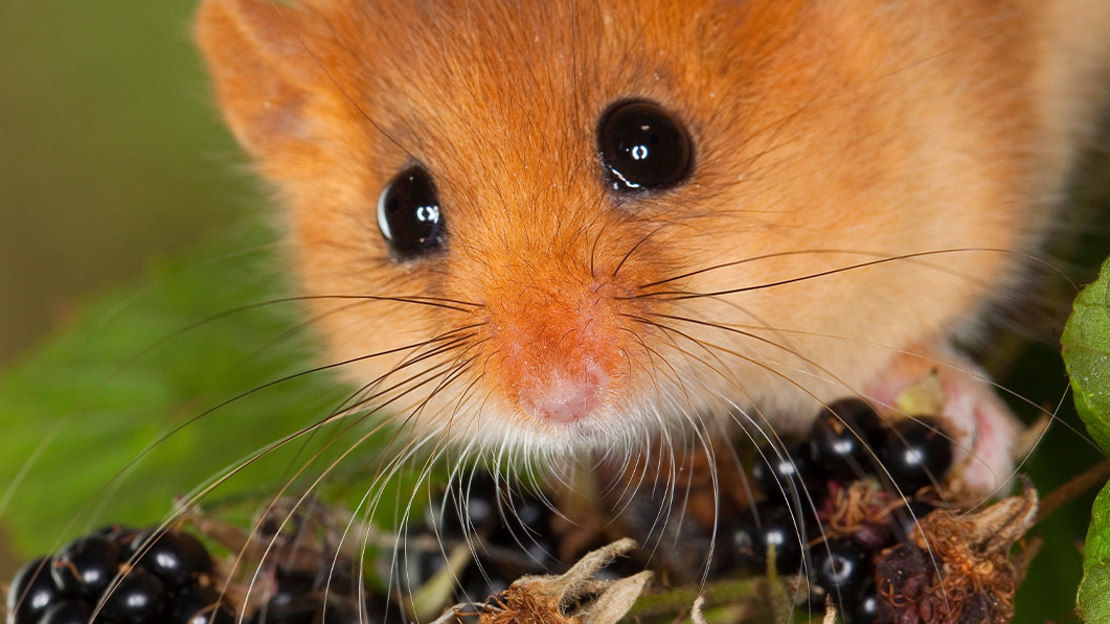Common name: Lesser horseshoe bat
Scientific name: Rhinolophus hipposideros
Family: Rhinolophidae
Habitat: woodland, pasture, wetland areas
Diet: moths, midges, flies and spiders
Predators: domestic cats, sparrowhawks
Origin: native
Plum-sized and pink-faced, the lesser horseshoe bat is one of the smallest bats in the UK. Look out for them at dusk in woodland, but not in winter when they hibernate underground in caves and tunnels.
Common name: Lesser horseshoe bat
Scientific name: Rhinolophus hipposideros
Family: Rhinolophidae
Habitat: woodland, pasture, wetland areas
Diet: moths, midges, flies and spiders
Predators: domestic cats, sparrowhawks
Origin: native
One of the smallest bats in the UK, the lesser horseshoe is roughly the same size as a plum when its wings are tucked in. It has greyish brown fur with a paler underside and a pink face. Like its cousin, the greater horseshoe bat, it has a fleshy, horseshoe-shaped nose leaf. Its ears are large, triangular and have a sharp point.
Moths, midges, spiders and flies make up the lesser horseshoe bat’s diet. It hunts relatively close to the ground, rarely flying more than five metres above it. Bats will often take larger prey back to a perch to eat.
The breeding season for lesser horseshoe bats takes place in autumn. The following spring, females will form maternity roosts. They usually give birth to a single pup in July or August, and the young become independent at roughly a month to six weeks old.

Credit: Arco Images Gmbh / Alamy Stock Photo
Lesser horseshoe bats spend the winter in hibernation, often taking shelter underground in caves, cellars, tunnels and mines.
These bats can twist their bodies to observe their surroundings before flying away.
These bats normally roost in old buildings, barns and churches and feed along woodland edges, hedgerows, wetlands and over pasture. They are found in the west of England, Wales and western Ireland.
Look out for these bats around 30 minutes after the sun sets in areas of woodland, pasture and hedgerows. Be very quiet as lesser horseshoe bats are very sensitive to disturbance.
Lesser horseshoes are the only bat species which can move their ears to help them locate their prey.
The lesser horseshoe bat population is currently thought to be increasing. However, it still faces a number of threats, including a loss of prey caused by agricultural intensification and the presence of artificial lighting, which may cause bats to avoid otherwise suitable habitat.
Keep exploring

Woodland wildlife is fading before our eyes. Please support our appeal to save rare and threatened species.
Donate now